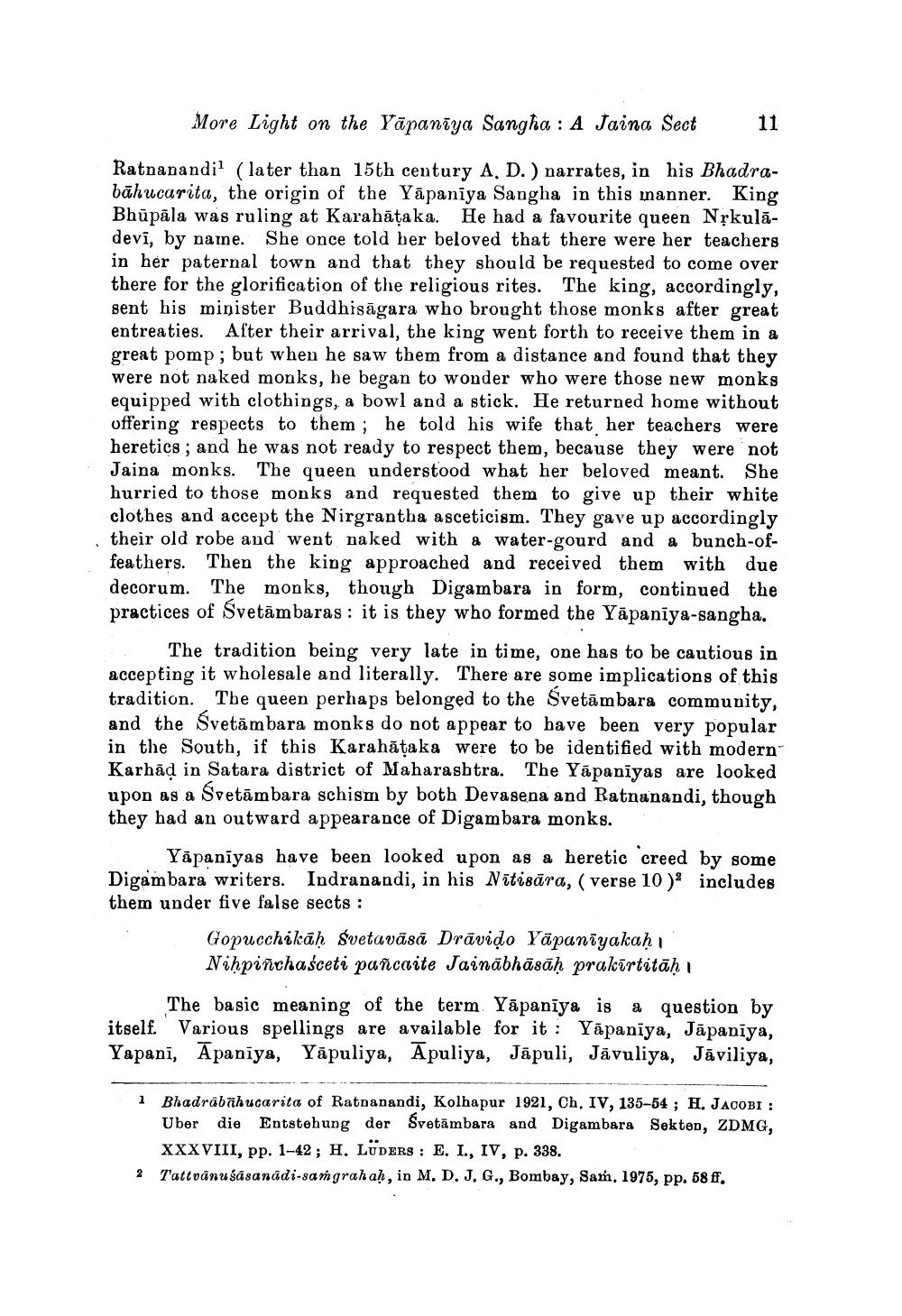Book Title: More Light On Yapaniya Sangha Author(s): A N Upadhye Publisher: A N Upadhye View full book textPage 4
________________ More Light on the Yāpanīya Sangħa : A Jaina Sect 11 Ratnanandi? (later than 15th century A. D.) narrates, in his Bhadrabāhucarita, the origin of the Yāpanīya Sangha in this manner. King Bhūpāla was ruling at Karahāțaka. He had a favourite queen Nļkulādevī, by name. She once told her beloved that there were her teachers in her paternal town and that they should be requested to come over there for the glorification of the religious rites. The king, accordingly, sent his minister Buddhisāgara who brought those monks after great entreaties. After their arrival, the king went forth to receive them in a great pomp; but when he saw them from a distance and found that they were not naked monks, he began to wonder who were those new monks equipped with clothings, a bowl and a stick. He returned home without offering respects to them; he told his wife that her teachers were heretics, and he was not ready to respect them, because they were not Jaina monks. The queen understood what her beloved meant. She hurried to those monks and requested them to give up their white clothes and accept the Nirgrantha asceticism. They gave up accordingly their old robe and went naked with a water-gourd and a bunch-offeathers. Then the king approached and received them with due decorum. The monks, though Digambara in form, continued the practices of Svetāmbaras: it is they who formed the Yāpaniya-sangha. The tradition being very late in time, one has to be cautious in accepting it wholesale and literally. There are some implications of this tradition. The queen perhaps belonged to the Svetāmbara community, and the Svetämbara monks do not appear to have been very popular in the South, if this Karahătaka were to be identified with modern Karhād in Satara district of Maharashtra. The Yāpaniyas are looked upon as a Svetām bara schism by both Devasena and Ratnanandi, though they had an outward appearance of Digambara monks. . Yapaniyas have been looked upon as a heretic creed by some Digambara writers. Indranandi, in his Nītisāra, (verse 10 ) includes them under five false sects : Gopucchikah svetavāsā Drāvido Yapaniyakah Nihpiñchaśceti pañcaite Jainābhāsāḥ prakīrtitāḥı The basic meaning of the term Yāpaniya is a question by itself. Various spellings are available for it : Yāpaniya, Jāpaniya, Yapani, Apaniya, Yāpuliya, Apuliya, Jāpuli, Jāvuliya, Jāviliya, i Bhadrabahucarita of Ratnanandi, Kolhapur 1921, Ch. IV, 135-54 ; H. JACOBI : Uber die Entstehung der Svetāmbara and Digambara Sekten, ZDMG, XXXVIII, pp. 1-42; H. LUDERS : E. I., IV, p. 338. 2 Tattvānu sāsanādi-samgrahah, in M. D. J. G., Bombay, Sam, 1975, pp. 58 ff.Page Navigation
1 2 3 4 5 6 7 8 9 10 11 12 13 14 15
